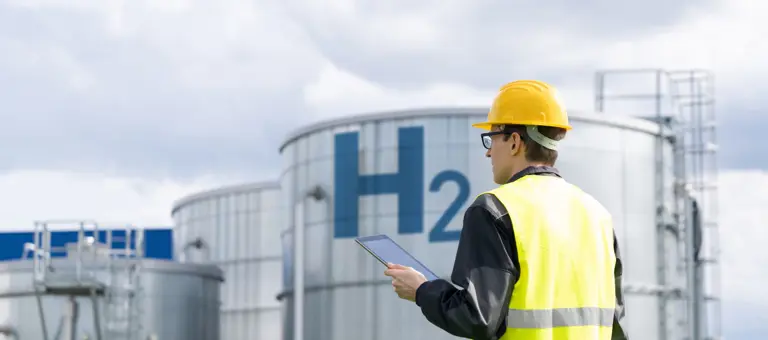
Five takeaways from the UK's first hydrogen allocation round
7 min read 17 May 2024
In December 2023, the Department for Energy Security and Net Zero (DESNZ) announced the results of its first hydrogen allocation round (HAR1), a significant step in promoting the development of the UK’s hydrogen economy.
I led DESNZ’s hydrogen business model allocation teams from June 2022 to January 2024, including bilateral commercial negotiations with HAR1 projects. Here, I summarise my key takeaways from leading that process, including lessons developers can incorporate into subsequent projects regarding:
- Offtakers
- Electricity sourcing
- Strategic value
- Business models
- Political support
What was HAR1?
HAR1 was a competition to award 15-year contracts known as Low Carbon Hydrogen Agreements (LCHAs), a contracts-for-difference-type business model to support hydrogen production. The aim was for HAR1 to be a ‘pathfinder’ round that would kickstart the hydrogen economy, generate critical learnings, and provide a platform for future rounds.
Under the framework, the government subsidises the difference between the reference price, set as the (month ahead) natural gas price, and the total cost of hydrogen production, known as the strike price. The government will pay for the subsidy initially, but a new levy is being developed to be placed on gas shippers to fund it in future.
Under HAR1, DESNZ set an aim to deliver up to 250 MW capacity and shortlisted 20 projects totalling 408 MW for negotiations. The 11 successful projects totalled 125 MW, with certain larger projects either withdrawing or proving unsuccessful in negotiations.
What lessons should the industry learn for future HARs?
The second hydrogen allocation round (HAR2) is targeting up to 875 MW capacity to deliver on the government’s aim to have up to 1 GW capacity in operation or construction by 2025. It launched before HAR1 projects began construction, meaning it will be a ‘pathfinder’ round, too.
By all accounts, HAR2 and future rounds will be oversubscribed, with developers responding to the success of HAR1 and submitting multiple GWs of applications. It’s therefore worth evaluating lessons learned from HAR1; here are five key takeaways from leading that process:
1. Offtaker commitments are critical to success
The LCHA allows users, or offtakers, in sectors such as industry, power, and transport to buy hydrogen at the natural gas price. This enables them to displace their use of natural gas or higher-cost fuels like grey hydrogen or diesel to decarbonise their operations for no additional fuel cost, and potentially make a carbon price saving.
To mitigate demand risks, producers typically ask offtakers to sign long-term committed agreements, such as 15-year ‘take-or-pay’ agreements to match the LCHA’s length. These guarantee hydrogen producers a portion of the agreed payment if the buyer doesn’t follow through and buy hydrogen.
As a result, offtakers will hesitate to sign firm agreements unless transitioning to hydrogen use really matters for the future of their business. In HAR1, I saw good developers with strong projects and considerable offtaker engagement still have offtakers withdraw or reduce demand at the last minute because they (and often their international leadership teams) weren’t yet ready to commit.
We’ve seen various versions of a hydrogen use case hierarchy, the most notable potentially being Michael Leibreich’s Hydrogen Ladder. While DESNZ are taking an offtaker-agnostic approach for now, building projects around offtakers lower down the ladder (for example, mid- to low-temperature industrial heat) carries risks if these offtakers can later pursue a cheaper route to decarbonisation, such as electrification. If they have viable alternatives, they will have a lower willingness to pay for hydrogen – reducing the ability for producers to rely on them for future revenues.
2. Electricity sourcing must be optimised early on
Unlike some other clean energy technologies, hydrogen production is a fuel input optimisation rather than capex reduction game. Given around 70% of the total cost of green hydrogen production is electricity, optimising how a project sources and uses electricity makes a huge difference to overall competitiveness.
Therefore, early project decisions make a material difference to production costs later on, including
- plant location
- grid connection size
- renewables assets to connect to
- load factor
- committed supply level.
While some of these can be adapted and optimised, others will be relatively fixed – which constrains the extent to which a project can later reduce costs and improve competitiveness. Minimising electricity costs means planning from the outset to:
- reduce the use of expensive, underutilised grid connections
- supply offtakers as flexibly as possible
- connect to multiple renewables assets, ideally through private wire
- sign power purchase agreements (PPAs) that give optionality.
Treating these as ‘red lines’ as much as possible – while still being able to guarantee supply to match offtaker needs – will help developers deliver the most competitive bids. Two upcoming policy changes could help drive down electricity costs.
The British Industry Supercharger measures will fully exempt Energy Intensive Industries (including hydrogen producers) from the policy costs of renewables schemes including Feed-In Tariff, Renewables Obligation and Contracts for Difference as well as the GB Capacity Market. And there will also be a 60% reduction in network charges – the costs industrial users pay for their electricity supply.
The second consultation on the Review of Energy Market Arrangements (REMA), while rejecting Location Marginal Pricing (LMP), has included a focus on zonal pricing. If implemented, this would see areas like Scotland with high levels of renewables generation generally have lower wholesale electricity prices than the rest of the UK. Moving to zonal pricing would take five years to implement, so from 2030 based on REMA final outputs in 2025.
3. Projects must deliver broader strategic value
Unlike in the EU, allocation hasn’t yet moved to pure price-competitive auctions, and the government can agree contracts with projects at different prices. Given the fierce competition, projects must offer strategic value to improve their chances of securing a contract. Therefore, beyond being price-competitive and deliverable, developers should consider questions such as:
- Can you supply high-value offtakers that have fewer other routes to decarbonisation?
- Can you showcase how to use mostly cheap, otherwise-curtailed electricity while still delivering a project which matches supply to offtaker demand profile?
- Do you have the potential to scale capacity on the same site in the future and secure economies of scale?
- Can you act as anchor projects and provide the investment case to unlock critical national infrastructure like large-scale underground storage or pipelines?
- Can you contribute to developing and growing UK supply chain capacity necessary to deliver economic benefits and reduce supply chain risks?
4. Business models must evolve to reduce risks
The UK has made tremendous strides to develop the LCHA in a form that is considered investable and is allowing the first commercial green hydrogen projects to take FID. However, this framework will have to evolve to bring forward projects at scale.
The LCHA doesn’t currently allow risk-taking intermediaries (RTIs) – essentially middle companies that take custody of hydrogen from a producer or multiple producers and then sell it on for profit. Separately the LCHA in effect limits the extent to which producers can sell their hydrogen above the reference price, known as the ‘Price Discovery Incentive’. This is because there is a 90:10 ratio between government and the developer for who benefits from revenues earned above the gas price floor.
These limits are understandable given the market’s early stage and the potential gaming and monopoly pricing risks.
Over time, the rules will have to evolve to enable these arrangements. RTIs will become necessary to ensure projects are less dependant on demand from individual offtakers, to enable project finance and reduce the cost of capital. Equally, RTIs will reduce offtaker dependency on supply from individual projects. And developers will need to benefit from higher achieved sales prices, to enable market forces to work, elicit the maximum willingness to pay from different offtakers and reduce subsidy payout.
Reaching this point will take time and requires progress in key areas:
- More production plants are needed, at scale, to prevent individual plants from claiming local monopolies
- Transport and storage networks must be developed so hydrogen can be more cost-effectively and flexibly moved from different producers to a range of offtakers.
5. Continued political support relies on falling costs
Hydrogen currently enjoys near-unanimous support across the political divide. Leader of opposition Keir Starmer recently asked: "Some nation will win the race for new hydrogen power... why not this one?"
But ultimately, hydrogen production will have to be subsidised for some time before it can operate on a market basis. To fund this, a levy on gas shippers is being developed. While we don’t yet know how the levy costs will be recovered by gas shippers, they will inevitably have to be distributed across the system. And some of those costs may fall on households or businesses.
HAR1 was a price discovery round with a high average strike price of £241/MW (just over £9 per kg), which was necessary to unlock first-of-a-kind projects. The government has set an ambition for up to 10 GW of hydrogen production capacity in operation or construction by 2030 – but it will not be able to pursue this ambition at all costs.
While HAR1 will have a negligible impact on bills, costs must come down for the government’s wider production aims to be realised. Particularly in the context of international competition and pressure from countries with low cost renewables such as in the Nordics, Iberia and Latin America.
This means that projects will have to optimise to capitalise on the UK’s natural advantages including abundant wind power and moving zonal pricing in Scotland, the UK’s expertise in moving gases through large-scale pipelines and the potential to repurpose salt caverns for hydrogen storage.
Otherwise, as levy costs start to bite, popular support for subsidising hydrogen will fall away – and governments of whatever colour will struggle to maintain ambitions and funding for domestic production.
How can you act on these lessons – and boost project competitiveness for HAR2 and beyond?
Developers can take plenty of steps to put projects in a strong position for HAR2 negotiations and HAR3 strategy, including across these five areas. Contact Dharmesh Jadavji to discuss how Baringa can help.
Dharmesh Jadavji joined Baringa after leading DESNZ’s hydrogen business model allocation teams from June 2022 to January 2024. He is writing in a personal capacity based on his experiences.
Our Experts

Related Insights
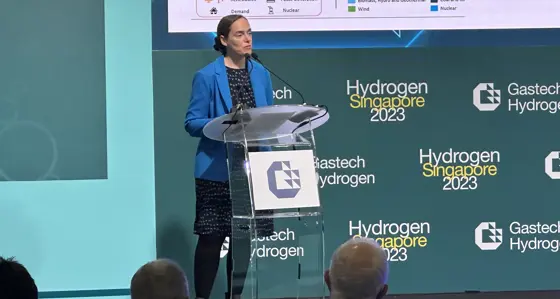
Five things we’ve learned from speaking at hydrogen conferences around the world
Baringa’s hydrogen experts have been presenting our views on the developing hydrogen market at three conferences across the globe, and we’re keen to share some of our insights with you.
Read more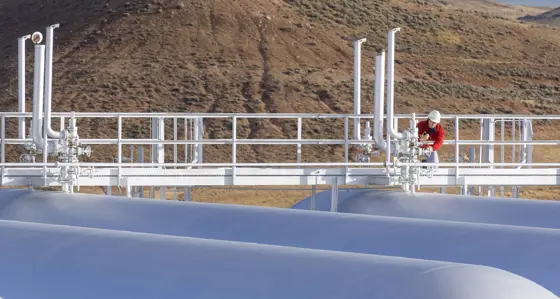
Texas - the hydrogen export powerhouse of the future
Texas is positioning itself as a global leader in hydrogen exports, which offers transformative opportunities to repurpose existing storage, transport and export infrastructure throughout the state, and in particular on the Gulf Coast.
Read more
How can Australian developers capitalise on the hydrogen export opportunity to East-Asian markets?
The role of hydrogen as an enabler of net zero targets in South Korea and Japan are making a market for hydrogen exports. But how can Australian developers tap into the opportunity?
Read more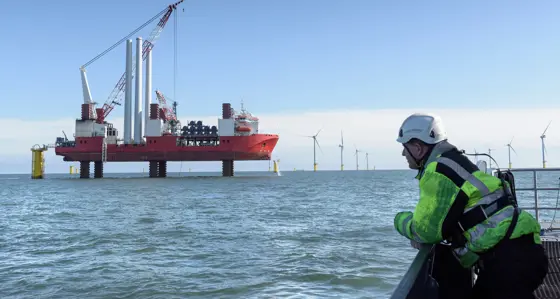
Can green hydrogen produced in the UK be competitive in the emerging global market?
Hydrogen offers a compelling route to market for offshore wind in the UK that would otherwise be grid constrained.
Read moreRelated Client Stories
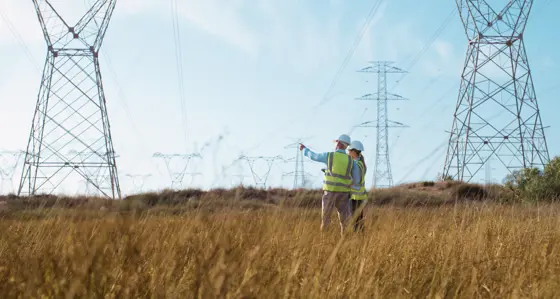
Maintaining the stability of the New South Wales power system
How do you ensure the future stability of the NSW power system?
Read more
Shaping a self-generation strategy for a major data centre
How do you develop an energy generation plan that balances sustainability with commercial due diligence?
Read more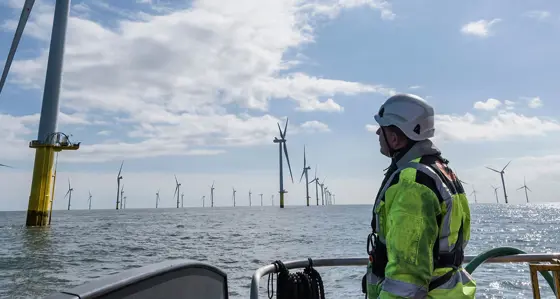
Evaluating the case for the world’s biggest offshore wind project
We helped our client reach financial close for all three phases of the project, securing 15-year CfDs with delivery between 2023-2025.
Read more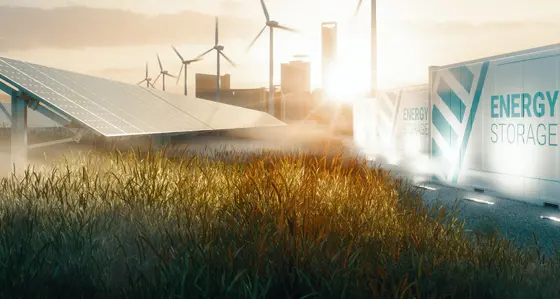
Green Hydrogen value-chains unpacked
Mapping and analysis of the potential of Green Hydrogen across multiple European markets helped our client’s strategic focus and investment decision-making.
Read moreIs digital and AI delivering what your business needs?
Digital and AI can solve your toughest challenges and elevate your business performance. But success isn’t always straightforward. Where can you unlock opportunity? And what does it take to set the foundation for lasting success?